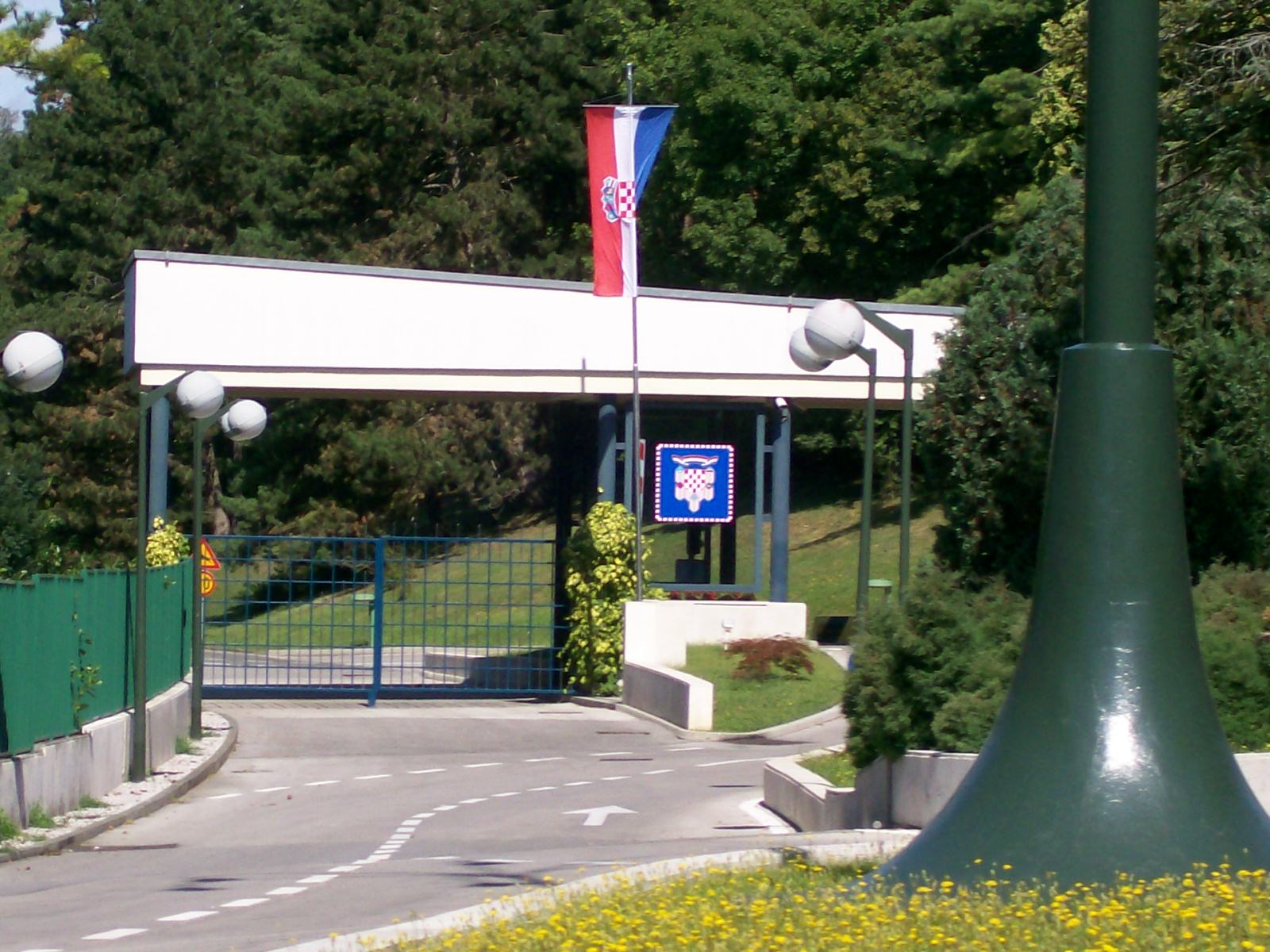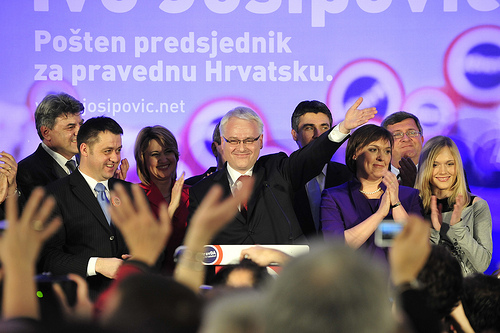|
St. Mark's Square, Zagreb
St. Mark's Square ( hr, Trg svetog Marka, abbreviated ''Trg sv. Marka'', also known as ''Markov trg'') is a square located in the old part of Zagreb, Croatia, called Gradec or Gornji grad ( en, Upper town). In the center of square is located St. Mark's Church. The square also sports important governmental buildings: Banski dvori (the seat of the Government of Croatia), Croatian Parliament ( hr, Hrvatski sabor) and Constitutional Court of Croatia. On the corner of St. Mark's Square and the Street of Ćiril and Metod is the Old City Hall, where the Zagreb City Council held its sessions. In 2006, the square underwent a renovation project. In August 2005, the Government forbid any form of protests on St. Mark's Square, which caused controversies in Croatian civil society. This ban was partially lifted in 2012. Until 2020 the square was also the site of the inaugurations of Croatia's presidents. Franjo Tuđman took his oath as President of the Republic in 1992 and 1997, Stjepan ... [...More Info...] [...Related Items...] OR: [Wikipedia] [Google] [Baidu] |
Zagreb
Zagreb ( , , , ) is the capital (political), capital and List of cities and towns in Croatia#List of cities and towns, largest city of Croatia. It is in the Northern Croatia, northwest of the country, along the Sava river, at the southern slopes of the Medvednica mountain. Zagreb stands near the international border between Croatia and Slovenia at an elevation of approximately above mean sea level, above sea level. At the 2021 census, the city had a population of 767,131. The population of the Zagreb urban agglomeration is 1,071,150, approximately a quarter of the total population of Croatia. Zagreb is a city with a rich history dating from Roman Empire, Roman times. The oldest settlement in the vicinity of the city was the Roman Andautonia, in today's Ščitarjevo. The historical record of the name "Zagreb" dates from 1134, in reference to the foundation of the settlement at Kaptol, Zagreb, Kaptol in 1094. Zagreb became a free royal city in 1242. In 1851 Janko Kamauf became Z ... [...More Info...] [...Related Items...] OR: [Wikipedia] [Google] [Baidu] |
Stjepan Mesić
Stjepan "Stipe" Mesić (; born 24 December 1934) is a Croatian lawyer and politician who served as President of Croatia from 2000 to 2010. Before serving two five-year terms as president, he was prime minister of SR Croatia (1990) after the first multi-party elections, the last president of the Presidency of Yugoslavia (1991) and consequently secretary general of the Non-Aligned Movement (1991), as well as speaker of the Croatian Parliament (1992–1994), a judge in Našice, and mayor of his hometown of Orahovica. Mesić was a deputy in the Croatian Parliament in the 1960s, and was then absent from politics until 1990 when he joined the Croatian Democratic Union (HDZ), and was named President of the Executive Council (Prime Minister) of the Socialist Republic of Croatia (then still a constituent republic of the SFR Yugoslavia) after HDZ won the elections. His cabinet is, despite holding office before Croatia's independence, considered by the Government of Croatia to have been t ... [...More Info...] [...Related Items...] OR: [Wikipedia] [Google] [Baidu] |
Squares In Zagreb
In Euclidean geometry, a square is a regular quadrilateral, which means that it has four equal sides and four equal angles (90-degree angles, π/2 radian angles, or right angles). It can also be defined as a rectangle with two equal-length adjacent sides. It is the only regular polygon whose internal angle, central angle, and external angle are all equal (90°), and whose diagonals are all equal in length. A square with vertices ''ABCD'' would be denoted . Characterizations A convex quadrilateral is a square if and only if it is any one of the following: * A rectangle with two adjacent equal sides * A rhombus with a right vertex angle * A rhombus with all angles equal * A parallelogram with one right vertex angle and two adjacent equal sides * A quadrilateral with four equal sides and four right angles * A quadrilateral where the diagonals are equal, and are the perpendicular bisectors of each other (i.e., a rhombus with equal diagonals) * A convex quadrilateral with successiv ... [...More Info...] [...Related Items...] OR: [Wikipedia] [Google] [Baidu] |
Presidential Palace, Zagreb
The Presidential Palace ( hr, Predsjednički dvori), also referred to by the metonym Pantovčak, is the official workplace of the President of Croatia since late 1991, situated in Pantovčak, Zagreb. However, the president does not reside in the building and it is instead used to house the Office of the President, while the president continues to reside in his or her private residence during the duration of their term of office. Even so, welcoming ceremonies for visiting foreign dignitaries, state functions commemorating national holidays and consultations with leaders of parliamentary parties during post-election government formation processes, among others, are all usually held at the palace. Furthermore, it has become somewhat customary for the outgoing president and the president-elect to hold a bilateral meeting and a joint press conference in the palace on the former's last day in office, before his or her final departure from the palace grounds and the beginning of the l ... [...More Info...] [...Related Items...] OR: [Wikipedia] [Google] [Baidu] |
Zoran Milanović
Zoran Milanović (; born 30 October 1966) is a Croatian politician serving as President of Croatia since 19 February 2020. Prior to assuming the presidency, he was prime minister from 2011 to 2016 and president of the Social Democratic Party from 2007 to 2016. After graduating from the Zagreb Faculty of Law, Milanović started working in the Ministry of Foreign Affairs. He served as Advisor at the Croatian mission to the European Union and NATO in Brussels from 1996 to 1999. During the same year he joined the Social Democratic Party. In 1998 he earned his master's degree in European Union law at the Free University Brussels and was an assistant to the Croatian foreign minister for political multilateral affairs in 2003. In June 2007 he was elected president of the SDP, following the death of the long-time party leader and former prime minister Ivica Račan. Under Milanović's leadership the party finished in second place in the 2007 parliamentary election and was unable to f ... [...More Info...] [...Related Items...] OR: [Wikipedia] [Google] [Baidu] |
Kolinda Grabar-Kitarović
Kolinda Grabar-Kitarović (; born 29 April 1968) is a Croatian politician and diplomat who served as President of Croatia from 2015 to 2020. She was the first woman to be elected to the office since the first multi-party elections in 1990 and independence from Yugoslavia in 1991. At 46 years of age, she also became the youngest person to assume the presidency. Before her election as President of Croatia, Grabar-Kitarović held a number of governmental and diplomatic posts. She was minister of European Affairs from 2003 to 2005, the first female minister of Foreign Affairs and European Integration from 2005 to 2008, Croatian ambassador to the United States from 2008 to 2011 and assistant secretary general for public diplomacy at NATO under Secretaries General Anders Fogh Rasmussen and Jens Stoltenberg from 2011 to 2014. She is a recipient of the Fulbright Lifetime Achievement Award and a number of national and international awards, decorations, honorary doctorates and honorar ... [...More Info...] [...Related Items...] OR: [Wikipedia] [Google] [Baidu] |
Ivo Josipović
Ivo Josipović (; born 28 August 1957) is a Croatian academic, jurist, and politician who served as President of Croatia from 2010 to 2015. Josipović entered politics as a member of the League of Communists of Yugoslavia (SKJ), and played a key role in the democratic transformation of the League of Communists of Croatia (SKH) into the Social Democratic Party (SDP) as the author of its first statute. He left politics in 1994, but returned in 2003, winning a seat in the Croatian Parliament running as an independent candidate on the SDP party list. He won re-election to parliament as a member of the SDP in 2007. In addition to politics, Josipović has also worked as a university professor, legal expert, musician and composer, and holds a Ph.D. in Law and advanced degrees in music composition. Following the end of his first term in Parliament in January 2008, he ran in the 2009–10 presidential election as the candidate of the Social Democrats, which he had rejoined in January ... [...More Info...] [...Related Items...] OR: [Wikipedia] [Google] [Baidu] |
Franjo Tuđman
Franjo Tuđman (; 14 May 1922 – 10 December 1999), also written as Franjo Tudjman, was a Croatian politician and historian. Following the country's independence from Yugoslavia, he became the first president of Croatia and served as president from 1990 until his death in 1999. He was the ninth and last President of the Presidency of SR Croatia from May to July 1990. Tuđman was born in Veliko Trgovišće. In his youth, he fought during World War II as a member of the Yugoslav Partisans. After the war, he took a post in the Ministry of Defence, later attaining the rank of major general of the Yugoslav Army in 1960. After his military career, he dedicated himself to the study of geopolitics. In 1963, he became a professor at the Zagreb Faculty of Political Sciences. He received a doctorate in history in 1965 and worked as a historian until coming into conflict with the regime. Tuđman participated in the Croatian Spring movement that called for reforms in the count ... [...More Info...] [...Related Items...] OR: [Wikipedia] [Google] [Baidu] |
Croatia
, image_flag = Flag of Croatia.svg , image_coat = Coat of arms of Croatia.svg , anthem = "Lijepa naša domovino"("Our Beautiful Homeland") , image_map = , map_caption = , capital = Zagreb , coordinates = , largest_city = capital , official_languages = Croatian , languages_type = Writing system , languages = Latin , ethnic_groups = , ethnic_groups_year = 2021 , religion = , religion_year = 2021 , demonym = , government_type = Unitary parliamentary republic , leader_title1 = President , leader_name1 = Zoran Milanović , leader_title2 = Prime Minister , leader_name2 = Andrej Plenković , leader_title3 = Speaker of Parliament , leader_name3 = Gordan Jandroković , legislature = Sabor , sovereignty_type ... [...More Info...] [...Related Items...] OR: [Wikipedia] [Google] [Baidu] |
President Of Croatia
The president of Croatia, officially the President of the Republic of Croatia ( hr, Predsjednik Republike Hrvatske), is the head of state, commander-in-chief of the military and chief representative of the Republic of Croatia both within the country and abroad. The president is the holder of the highest office in Croatia. However, the president is not the head of the executive branch ("non executive president") as Croatia has a parliamentary system in which the holder of the post of prime minister is the most powerful person within the country's constitutional framework and everyday politics. The president maintains the regular and coordinated operation and stability of the national government system, and safeguards the independence and territorial integrity of the country. The president has the power to call ordinary and extraordinary elections for the Croatian Parliament (in a manner specified by the Constitution), as well as to call referendums (with countersignature of the ... [...More Info...] [...Related Items...] OR: [Wikipedia] [Google] [Baidu] |
Old City Hall (Zagreb)
The Old City Hall ( hr, Stara gradska vijećnica) is a complex of three adjacent buildings located in the Gradec neighbourhood in Zagreb, Croatia. The three buildings were joined in the late 19th century and since then, the complex has served as the place where all sessions of the city assembly are held. History The earliest mention of the site dates from the 15th century, when a house on the same location was referred as "the Gradec city council building", and in 1614 the Gradec magistrate Jakov Gasparini had the house adapted into a town hall. According to historical records, in 1787 the building had eight rooms, a kitchen, three jails, two shops and a cellar. In 1803 the municipal authorities bought the adjacent building owned by count Adam Oršić, in order to expand the town hall. In 1832 local merchant Kristofor Stanković had won the main prize at the Vienna lottery and then decided to invest his winnings in building a city theatre. City authorities then added a secon ... [...More Info...] [...Related Items...] OR: [Wikipedia] [Google] [Baidu] |







